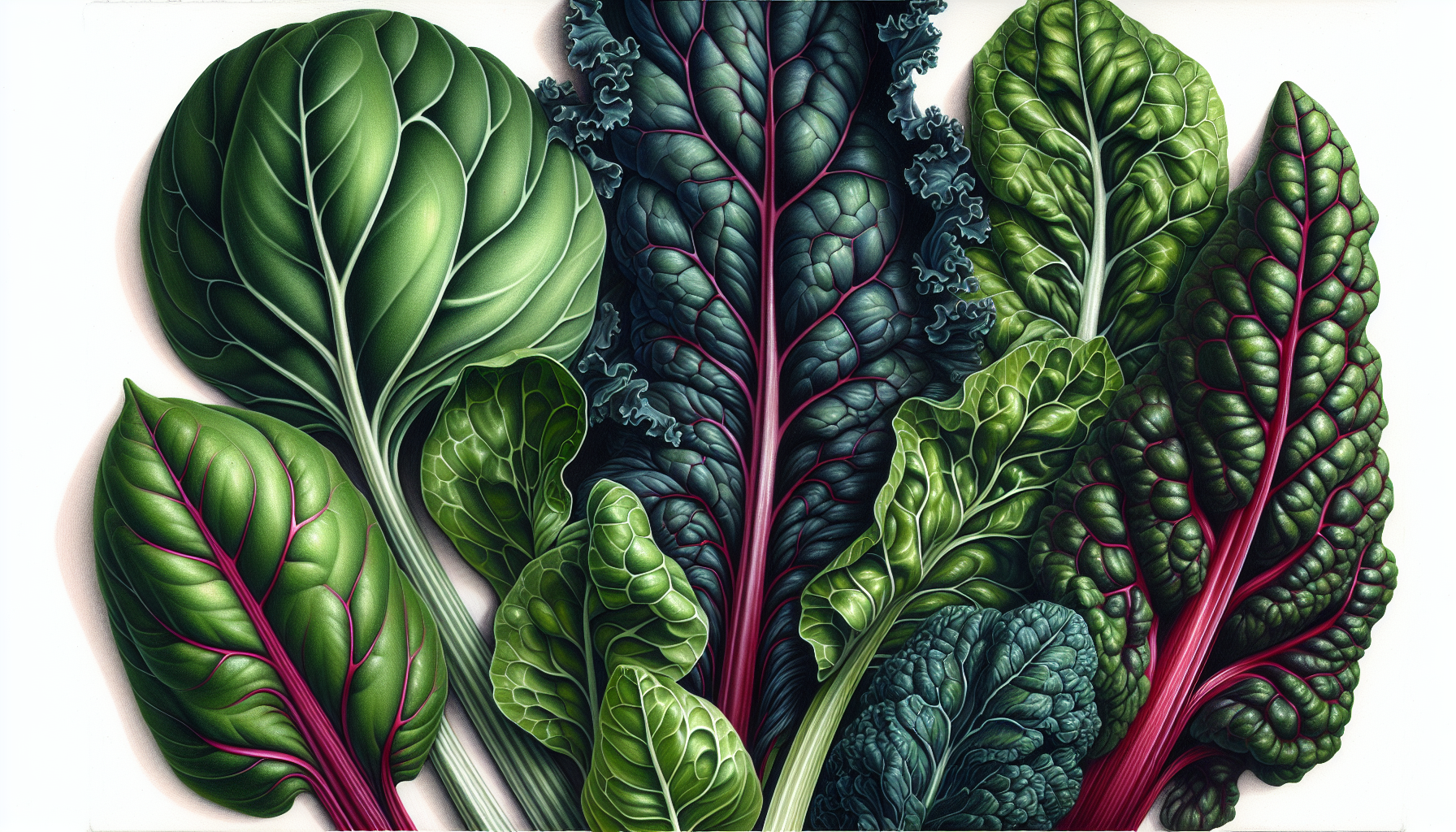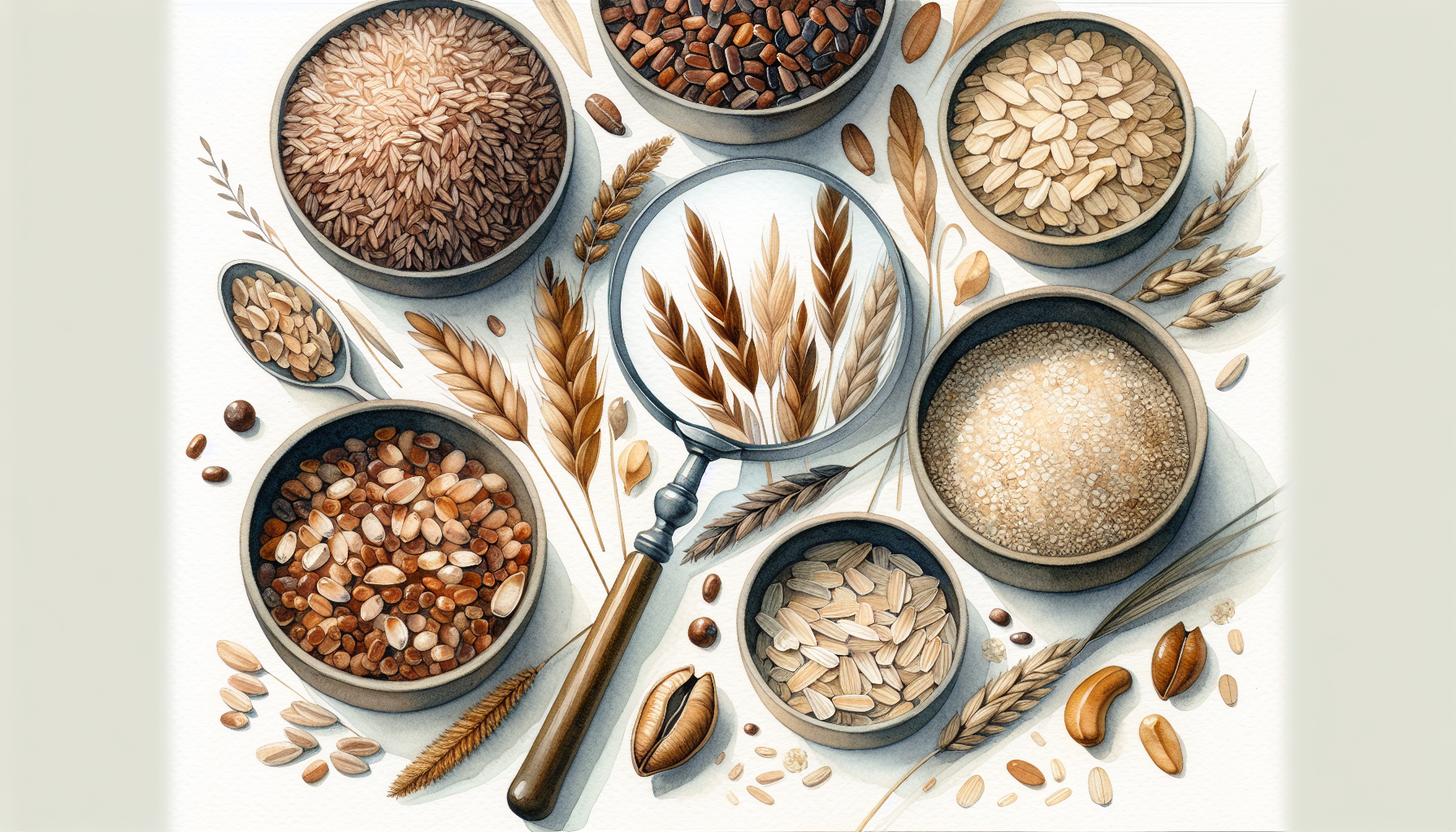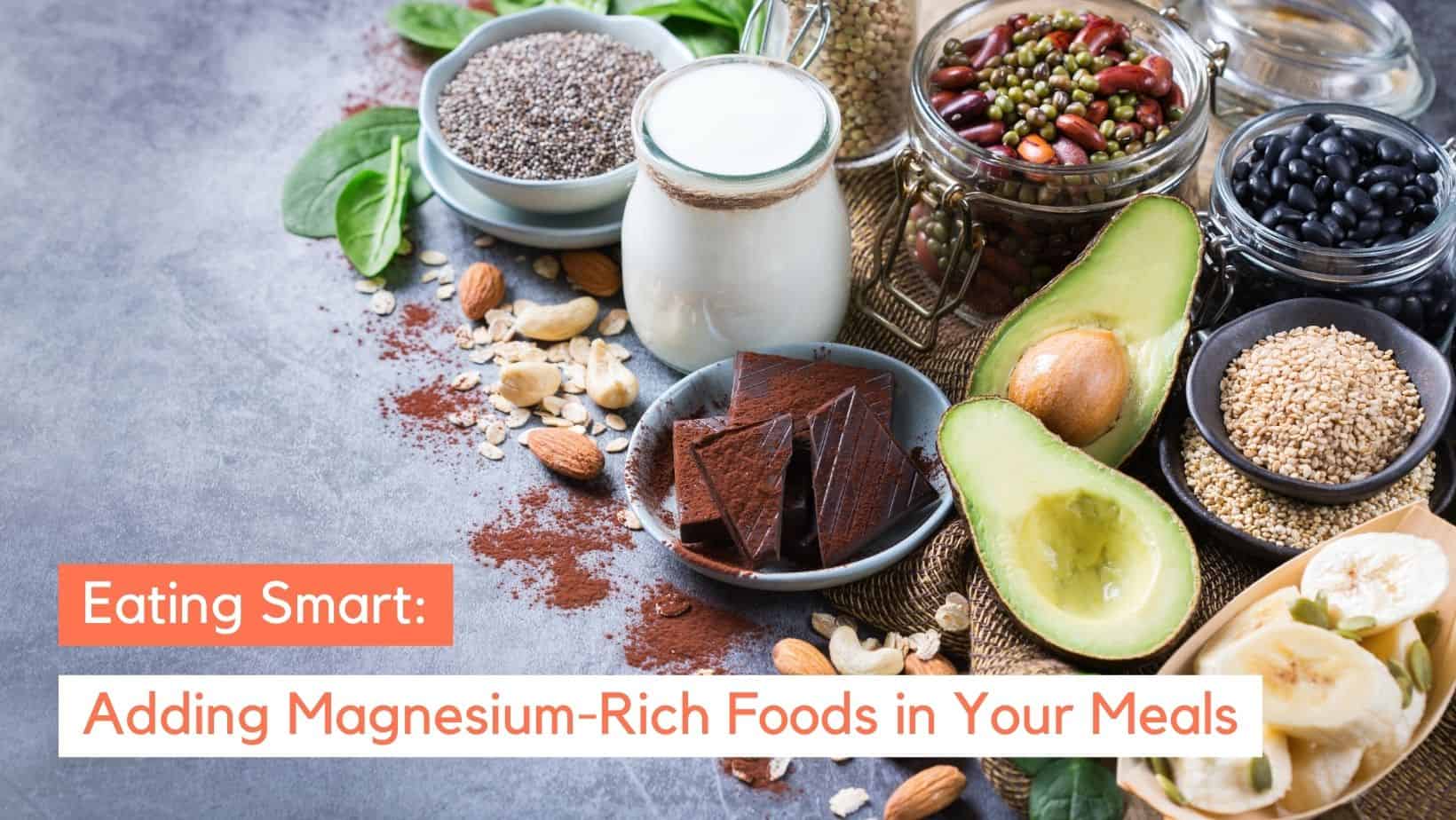Top 10 Highest Food in Magnesium for a Healthier You
The highest food in magnesium could be the secret to boosting your health. Are you experiencing unexplained fatigue or muscle cramps? These might be signs of magnesium deficiency. This essential mineral powers over 300 bodily functions, from energy production to muscle health.
Imagine feeling more energized and resilient just by adjusting your diet. That’s the potential of magnesium-rich foods. But which ones pack the biggest punch?
This article reveals the top 10 magnesium powerhouses, from leafy greens to dark chocolate. Discover how these foods can support your heart, muscles, and overall well-being.
Ready to transform your health with magnesium? Read on to learn which foods to add to your plate today.
Key Takeaways
- Dark leafy greens like spinach, kale, and Swiss chard are top magnesium-rich foods that support heart, muscle, and kidney health.
- Nuts and seeds, such as almonds, cashews, and pumpkin seeds, are excellent magnesium sources and make nutritious snacks.
- Fatty fish like salmon and tuna provide magnesium and heart-healthy omega-3 fatty acids, making them a great addition to your diet.
- Full-spectrum magnesium supplements, containing multiple forms of magnesium, can offer comprehensive benefits for those struggling to meet their magnesium needs through diet alone.
Dark Leafy Greens: A Magnesium Powerhouse

When it comes to magnesium-rich foods, dark leafy greens are at the top of the list.
Think spinach, kale, and Swiss chard – these vibrant greens are not just great for salads and smoothies, but they pack a magnesium punch.
For instance, one cup of boiled spinach contains 157 mg of magnesium, which is a significant portion of your daily requirement.
Kale, while not as rich, still provides a decent amount with nearly 7 mg per cup of raw leaves.
These leafy greens are rich in magnesium, which helps maintain the balance of essential minerals like calcium, potassium, and zinc in the body.
The mineral also supports the heart, muscles, and kidneys and plays acrucial role in energy production and blood sugar regulation.
Hence, these greens are a beneficial addition to a health-conscious diet, promoting bone health.
Incorporating dark leafy greens into your diet can help boost energy, reduce inflammation, and support your immune system.
Whether you’re blending them into a smoothie, tossing them in a salad, or sautéing them as a side dish, these magnesium-rich foods are a must-have for a balanced diet.
Some examples of dark leafy greens include:
- Spinach
- Kale
- Swiss chard
- Collard greens
- Arugula
- Romaine lettuce
Try adding these greens to your meals to reap their many health benefits.
Nuts and Seeds: Nutrient-Dense Snacks

Nuts and seeds make a quick, nutritious snack, filled with healthy fats and abundant magnesium. Here are some examples:
- Almonds contain 80 mg of magnesium per ounce.
- Cashews provide 72 mg of magnesium per ounce.
- Pumpkin seeds top the list with a whopping 150 mg of magnesium per ounce.
These foods are some of the most magnesium-rich options you can find, promoting optimal magnesium absorption and helping maintain healthy magnesium levels.
Including magnesium supplements in your diet can also contribute to achieving the desired results, while avoiding the risk of magnesium toxicity and ensuring you don’t consume too much magnesium.
For those who may not get enough magnesium from their diet, magnesium supplementation can be an effective way to ensure adequate intake, especially for individuals with specific health conditions.
Chia seeds and flaxseeds are other great options, offering 111 mg and 40 mg of magnesium per ounce, respectively.
These tiny powerhouses are also high in dietary fiber, which can help with digestion and keep you feeling full longer.
Despite their nutritional benefits, keep in mind to consume them in moderation because of their high-calorie content.
Boost your magnesium intake with a fun and tasty homemade trail mix of various nuts and seeds.
Remember to monitor portion sizes to control your calorie intake. These snacks, rich in nutrients, are ideal for on-the-go snacking or adding crunch to yogurt or salads.
Additionally, they can help increase bone mineral density.
Fatty Fish: Heart-Healthy Nutrients
Delicious fatty fish like salmon and tuna come packed with magnesium and other heart-beneficial nutrients.
A 3-ounce filet of cooked farmed Atlantic salmon provides 25.5 mg of magnesium. These fish are also rich in omega-3 fatty acids and vitamin D, which are essential for maintaining good health.
The American Heart Association recommends eating fish, particularly fatty fish, at least two times a week to support heart health.
Omega-3 fatty acids found in these fish can help lower blood pressure, reduce the risk of heart disease, and improve overall cardiovascular health.
This makes fatty fish a fantastic addition to your diet not just for their magnesium content but also for their comprehensive health benefits, including blood pressure regulation.
Adding fatty fish to your weekly meal plan is as easy as grilling a salmon filet for dinner or including tuna in your salad. These delicious options not only provide magnesium but also support your heart, making them a win-win for your diet.
Whole Grains: Fiber-Rich Foods High in Magnesium

Whole grains, a vital component of a healthy diet, offer a wealth of magnesium and other essential nutrients.
Foods like brown rice, quinoa, and oats are particularly high in magnesium, which helps with carbohydrate metabolism and insulin sensitivity.
For instance, oats provide about 12% of the Reference Daily Intake (RDI) of magnesium per 28 grams.
In addition to their magnesium content, whole grains are packed with:
- Dietary fiber
- B vitamins
- Iron
- Zinc
- Antioxidants
These nutrients contribute to healthy digestion by adding bulk to stools and feeding beneficial gut bacteria.
Moreover, consuming whole grains can help lower fasting blood sugar levels and improve insulin sensitivity.
Swapping refined grains for whole grains in your meals may help mitigate inflammation and reduce the risk of chronic conditions like cardiovascular disease, which includes:
- heart disease,
- stroke,
- type 2 diabetes,
- and obesity.
Whether it’s a hearty bowl of oatmeal for breakfast or a serving of quinoa as a side dish, whole grains are a delicious and nutritious way to boost your magnesium intake.
Legumes: Plant-Based Magnesium Sources

Wondering how much magnesium you can get from legumes? These plant-based sources are not only rich in this crucial mineral but also provide a bevy of other nutrients. Some examples include:
- Black beans, which contain 120 mg of magnesium per cup, about 29% of the Daily Value.
- Chickpeas, which offer 48 mg of magnesium per 100 grams.
- Lentils, which provide 36 mg of magnesium per 100 grams.
These legumes are a great addition to your diet to increase your magnesium intake and help prevent magnesium deficiency, acting as a natural magnesium supplement.
Legumes, rich in magnesium, are also high in protein and fiber, making them a fundamental component in vegetarian and vegan diets.
They contribute to better blood sugar control and lower cholesterol levels, supporting overall heart health.
Including a variety of legumes in your meals can help ensure you get enough magnesium daily, along with other essential nutrients.
Whether you’re making a hearty bean soup, a chickpea salad, or a lentil stew, legumes are versatile and nutritious.
They not only boost your magnesium intake but also add texture and flavor to your dishes, making healthy eating enjoyable.
Dark Chocolate: A Sweet Source of Magnesium

Who says healthy eating can’t include a bit of indulgence? Dark chocolate is a delicious source of magnesium, especially when it contains 70-85% cocoa.
One ounce of such dark chocolate provides 64.6 mg of magnesium, making it a sweet way to boost your intake.
Beyond its magnesium content, dark chocolate is rich in flavanols, which can help improve blood flow and lower blood pressure.
The antioxidants in dark chocolate, including polyphenols, flavanols, and catechins, offer additional health benefits by reducing inflammation and protecting against oxidative stress.
A small piece of dark chocolate can be a satisfying and healthy part of your daily routine.
Choose a high-quality dark chocolate with a high cocoa content for maximum benefits and remember to control portion sizes to prevent excessive intake of sugar and fat.
Nonfat or Low-Fat Greek Yogurt: Protein and Magnesium
Nonfat or low-fat Greek yogurt is a protein powerhouse that also provides a good amount of magnesium.
A 6-ounce container offers approximately 18.7 mg of magnesium, along with about 17.5 grams of protein. This makes it an ideal choice for a nutritious breakfast or snack.
Greek yogurt’s inclusion in your diet can keep you satiated for an extended period, possibly reducing your overall calorie consumption and assisting in weight management.
Pairing it with fiber-rich fruit, such as berries or bananas, can create a balanced and delicious meal that supports your health goals.
Whether you’re enjoying it plain, with a drizzle of honey, or mixed with fruits and nuts, Greek yogurt is a versatile and tasty way to increase your magnesium intake while benefiting from its high protein content.
Soy Products: Versatile Magnesium-Rich Foods
Soy products like edamame are incredibly versatile and rich in magnesium. Edamame, in particular, contains plant compounds that may:
- reduce the risk of heart disease,
- improve the blood lipid profile,
- and have protective effects against osteoporosis, especially in menopausal and postmenopausal women.
These green soybeans are also rich in isoflavones.
Adding soy products to your diet can be as straightforward as including tofu in your stir-fries, savoring a bowl of steamed edamame, or sipping soy milk.
These options not only provide magnesium but also offer other health benefits, making them a valuable addition to any meal plan.
Fruits: Delicious and High in Magnesium
Fruits are not only delicious but also provide a good amount of magnesium. Some of the best options include:
- Bananas: A medium banana contains approximately 32 mg of magnesium.
- Avocados: A whole avocado offers around 58 mg of magnesium.
- Apples: An apple is also a good source of magnesium.
- Blackberries: Blackberries provide 29 mg of magnesium per serving.
- Papayas: Papayas offer 33 mg of magnesium per serving.
Including these fruits in your diet can help increase your magnesium intake.
Two servings of fruit a day are recommended for a balanced diet.
Including magnesium-rich fruits in your daily intake can help you meet the recommended daily magnesium intake of 310 to 420 milligrams for American adults.
These fruits not only provide magnesium but also come with other essential nutrients like potassium and vitamins, contributing to overall health.
Whether you’re enjoying a banana as a quick snack, adding avocado to your salad, or blending blackberries into a smoothie, these fruits are a tasty way to ensure you get enough magnesium.
Vegetables: More Than Just Greens
When we think of vegetables, we often focus on leafy greens, but there are many other veggies high in magnesium.
Broccoli, potatoes (with their skin), and okra are excellent examples.
Potatoes with their skin are particularly noteworthy, as they are a good source of magnesium and other nutrients.
Including these vegetables in your diet can significantly increase your magnesium intake, thereby supporting various bodily functions.
Magnesium is crucial for muscle and nerve function, regulating blood sugar levels, and synthesizing protein, bone, and DNA.
These vegetables are versatile and can be easily added to your meals, whether steamed, roasted, or stir-fried.
Potential Benefits of Full-Spectrum Magnesium Supplements
While obtaining nutrients from whole foods is generally preferable, magnesium supplements can be beneficial for those struggling to meet their daily requirements through diet alone.
Full-spectrum magnesium supplements, which combine multiple forms of magnesium, offer a comprehensive approach to supporting various aspects of health.
One such supplement, Magnesium 7, includes seven different forms of elemental magnesium, each potentially helping to support specific health areas:
- Magnesium Chelate may support muscle recovery.
- Magnesium Glycinate could aid sleep, anxiety, and brain health.
- Magnesium Aspartate might help with mood and mental well-being.
- Magnesium Malate may benefit the brain and nervous system.
- Magnesium Orotate could support heart health and exercise performance.
- Magnesium Taurate may assist with blood pressure and relaxation.
- Magnesium Citrate might promote cardiovascular and intestinal health.
Additionally, this type of supplement often includes co-factors like Vitamin B6 and Manganese, which may enhance magnesium absorption and contribute to stress reduction and bone strength, respectively.
It’s important to note that while these potential benefits are promising, individual results can vary. Always consult with a healthcare professional before starting any new supplement regimen, especially if you have pre-existing health conditions or are taking medications.
Remember, supplements should complement a balanced diet rather than replace it. They can be particularly useful for individuals with diagnosed magnesium deficiencies or those at risk of low magnesium levels due to certain health conditions or medications.
Summary
Incorporating magnesium-rich foods into your diet is a delicious and effective way to boost your health.
From dark leafy greens and nuts to whole grains and fruits, the options are vast and varied. These foods not only help you meet your daily magnesium needs but also provide a plethora of other nutrients essential for overall well-being.
Remember, while getting your nutrients from natural food sources is always preferable, those struggling to meet their magnesium needs through diet alone might consider a full-spectrum magnesium supplement under the guidance of a healthcare professional.
Whether through food or supplements, ensuring adequate magnesium intake can contribute to better muscle function, improved sleep, and enhanced overall health. Here’s to a healthier, more vibrant you!
Frequently Asked Questions
What are some signs of magnesium deficiency?
If you’re experiencing muscle cramps, fatigue, or irregular heartbeats, it could be a sign of magnesium deficiency. Watch out for these symptoms and consider speaking with a healthcare professional for further guidance.
How much magnesium should I consume daily?
You should aim for a daily intake of 310 to 420 milligrams of magnesium as an adult.
Can I consume too much magnesium from food?
Yes, it’s unlikely to consume too much magnesium from food alone, but be cautious with magnesium supplements to avoid toxicity.
Are magnesium supplements as effective as getting magnesium from food?
It’s best to get magnesium from natural food sources as they offer additional nutrients and health benefits. While supplements can help, they may not provide the same benefits as food sources.
Which foods are highest in magnesium?
Pumpkin seeds, dark leafy greens like spinach, and fatty fish like salmon are some of the highest magnesium foods you can include in your diet.



Comments